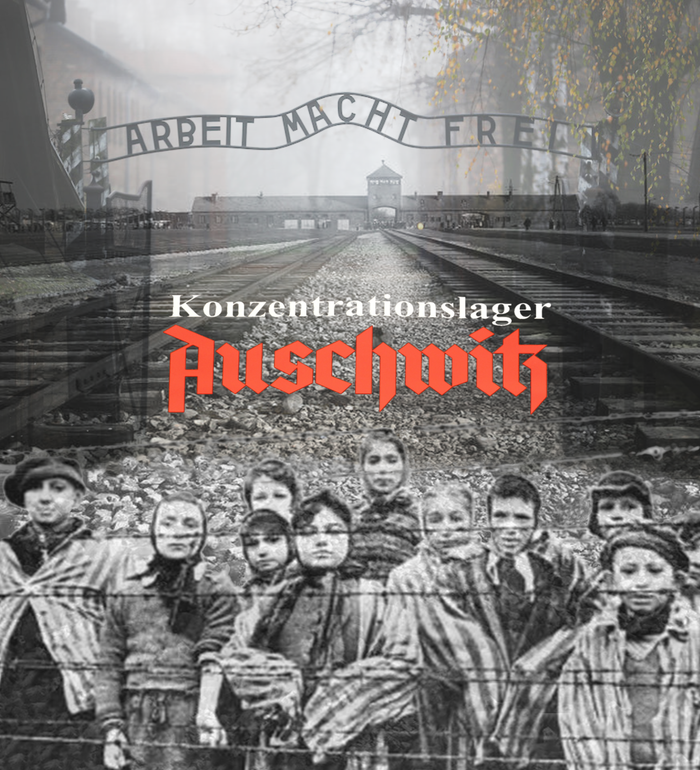author: IRENA FRACZEK
EXHIBIT OPENING ON MONDAY, NOVEMBER 11, 2019 at 6 PM
January 27, 2020 marks the 75th Anniversary of the liberation of Auschwitz.
To commemorate this event, Polish Heritage Club of Madison-Wisconsin, UW Department of German, Nordic and Slavic, UW Polish Student Association and Art Committee of Wisconsin Union Directorate - with support from UW Center for Jewish Studies - present

special exhibition
AUSCHWITZ-BIRKENAU
NAZI GERMAN CONCENTRATION AND EXTERMINATION CAMP
The exhibition portrays the development of Nazism in Germany, the barbaric nature of German occupation of Poland and the horrific history of the camp. Established as the instrument of terror against Polish society, in 1942 the camp became the largest site of the extermination of the Jews and consequently, the symbol of Holocaust.
November 11-16 (8am-10pm daily)
Gallery 1308 at Union South
1308 W Dayton St., Madison, WI 537155
Designed by the Auschwitz-Birkenau Memorial and Museum,
leased by the Polish American Congress, Long Island Division
LOVE YOUR NEIGHBOR: Reconsideration of the Gospels at the Time of the Holocaust
A talk complementing the exhibit will be given by Rachel F. Brennan, professor of Jewish Studies
Union South on November 15, 2019 at 7pm
1. Konzentrationslager Auschwitz: Nazi German Death Camp 2. The Origins and Aims of German Aggression 3. German Occupation Policy and the Creation of Auschwitz 4. The Beginnings of The Camp - The First Prisoners 5. Auschwitz- An Instrument of Terror Against Polish Civilians 6. The Expansion of The Camp 7. Auschwitz: Concentration Camp and Center for the Extermination of the Jews 8. Prelude to Destruction: German Policy Towards the Jews From 1933-1941 9. The Final Solution of the Jewish Question: The Holocaust 10. The Deportation of Jews to Auschwitz 11. The Facilities For Mass Murder 12. How Mass Murder Was Committed 13. Plunder 14. The Registration of Prisoners 15. Conditions in the Camp 16. Hunger 17. Prisoner Slave Labor 18. Terror and the Punishment System 19. Execution 20. Medical Experiments 21. The Women’s Camp 22. The Destruction of The Roma (Gypsies) 23. Soviet Prisoners of War 24. The Fate of Children and Young People 25. The Resistance Movement in Auschwitz 26. Escape and Mutiny 27. Exposing the Crime 28. Aid by Local Civilians 29. Evacuation - The Death March and Liberation 30. Auschwitz- The Memorial 31. Exhibit Information
In addition to photographs of Auschwitz prisoners and related documents, many panels present the drawings depicting the indescribable hardships of everyday life in the camp prisoners and the horrors of atrocities committed against the prisoners. The authors of these depictions include:
- Jan Komski (one of the first arrivals to Auschwitz, later the illustrator working for the Washington Post),
- Władysław Siwek (well known illustrator and director of the Auschwitz -Birkenau museum in 1952-1953),
- Bronisław Czech (famous in the interwar Poland champion skier with no previous drawing skills);
- Mieczysław Kościelniak (Chech's mentor in graphics arts and friend of Father Maksymilian Kolbe, who sacrificed his life to spare the life of another prisoner panel 16).
- Dina Babbitt née Gottliebova (author of the Romani portraits - see panel 22 - drawn for the infamous Dr. Mengele in exchange for sparing her mother and herself from the gas chamber)

